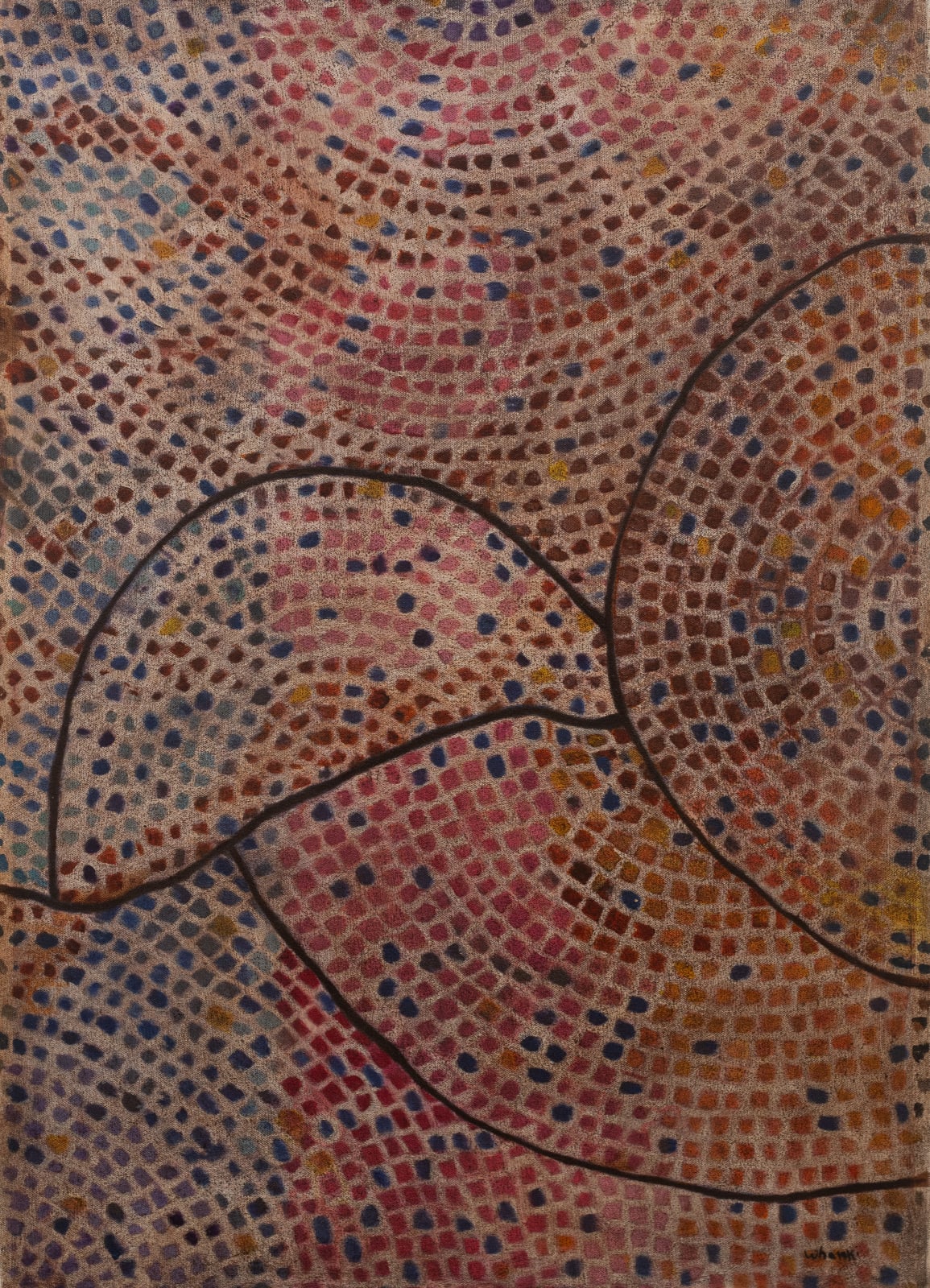Kim Whanki South Korean, 1913-1974
Untitled, 1964
Oil on canvas
27 3/8 x 19 5/8 in
69.6 x 49.8 cm
69.6 x 49.8 cm
Signed on recto, signed and dated on verso (canvas stretcher)
KWK
Further images
Kim Whanki, a pioneer Korean abstract painter, strived to express the beauty of his country and people while seeking new art forms. From the 1930s until the mid-1970s, he lived...
Kim Whanki, a pioneer Korean abstract painter, strived to express the beauty of his country and people while seeking new art forms. From the 1930s until the mid-1970s, he lived in different cities in the East and West, such as Tokyo, Busan, Seoul, Paris, and New York.
In 1963, he participated in the 7th São Paulo Biennale as the Korean representative, after which he moved to New York with support from the Rockefeller Foundation. He used the West 90th Street studio in Manhattan, immersing himself in the city's vibrant arts community. For his art, he became invested in the emotional power of poetry and music while witnessing burgeoning scenes of American abstract and pop art.
In this 1964 work by Kim, cheerful, small, multicolored dots are arranged in several overlapping circles, contrasting with a semicircular black border, suggesting the organic shapes of nature motifs. Inciting a calming pace of rhythm, this demonstrates the artist's early experiments in abstraction and the path to his expansive monochrome dot paintings, which appeared in the early 1970s until his untimely death in 1974 in New York.
In 1963, he participated in the 7th São Paulo Biennale as the Korean representative, after which he moved to New York with support from the Rockefeller Foundation. He used the West 90th Street studio in Manhattan, immersing himself in the city's vibrant arts community. For his art, he became invested in the emotional power of poetry and music while witnessing burgeoning scenes of American abstract and pop art.
In this 1964 work by Kim, cheerful, small, multicolored dots are arranged in several overlapping circles, contrasting with a semicircular black border, suggesting the organic shapes of nature motifs. Inciting a calming pace of rhythm, this demonstrates the artist's early experiments in abstraction and the path to his expansive monochrome dot paintings, which appeared in the early 1970s until his untimely death in 1974 in New York.










